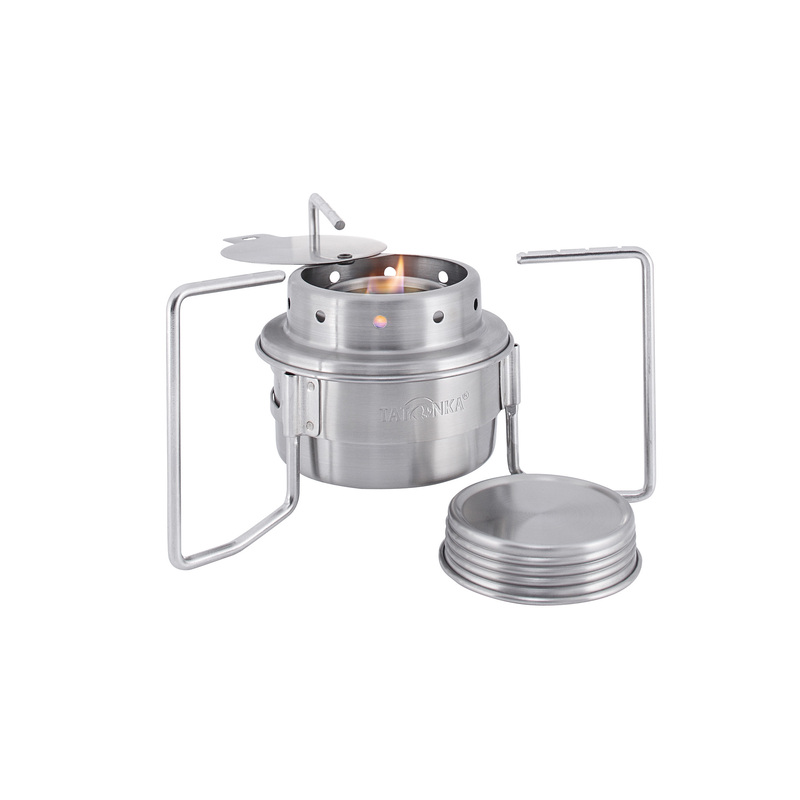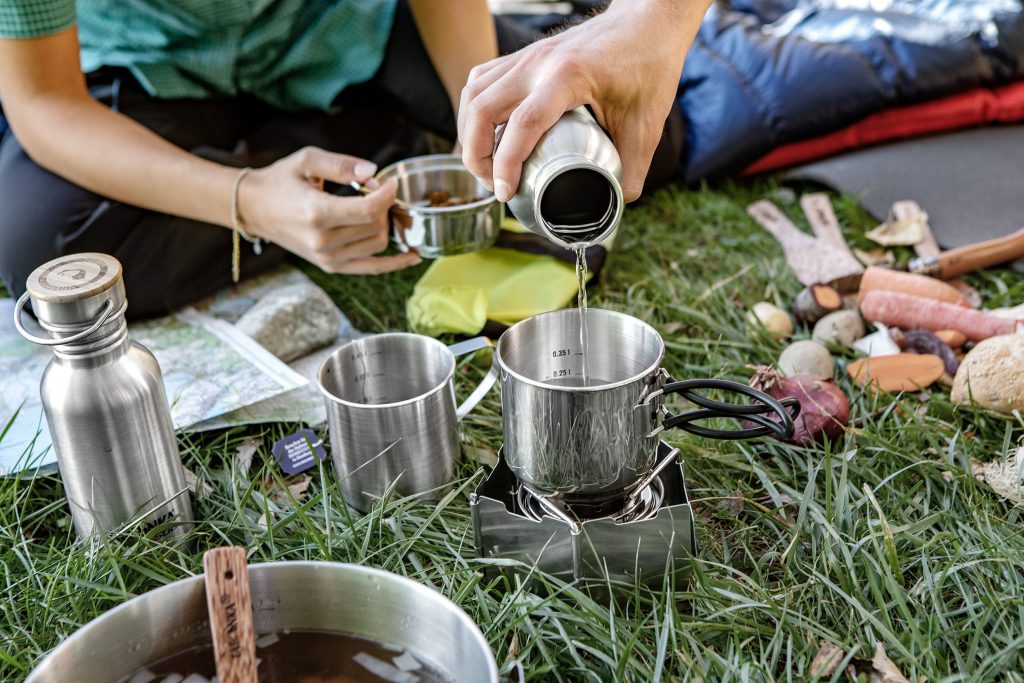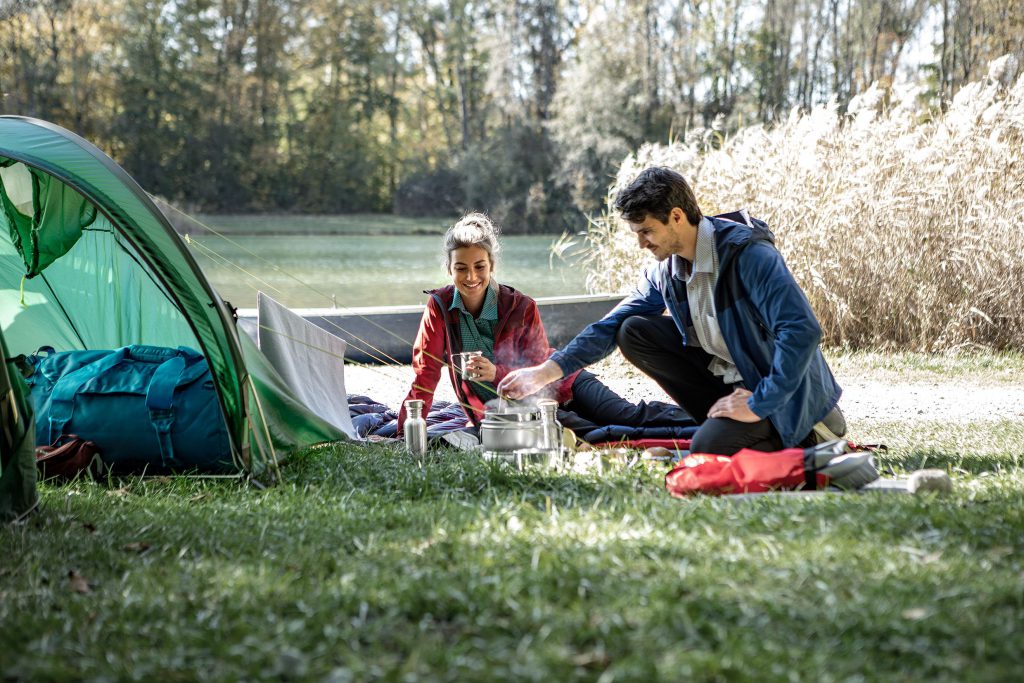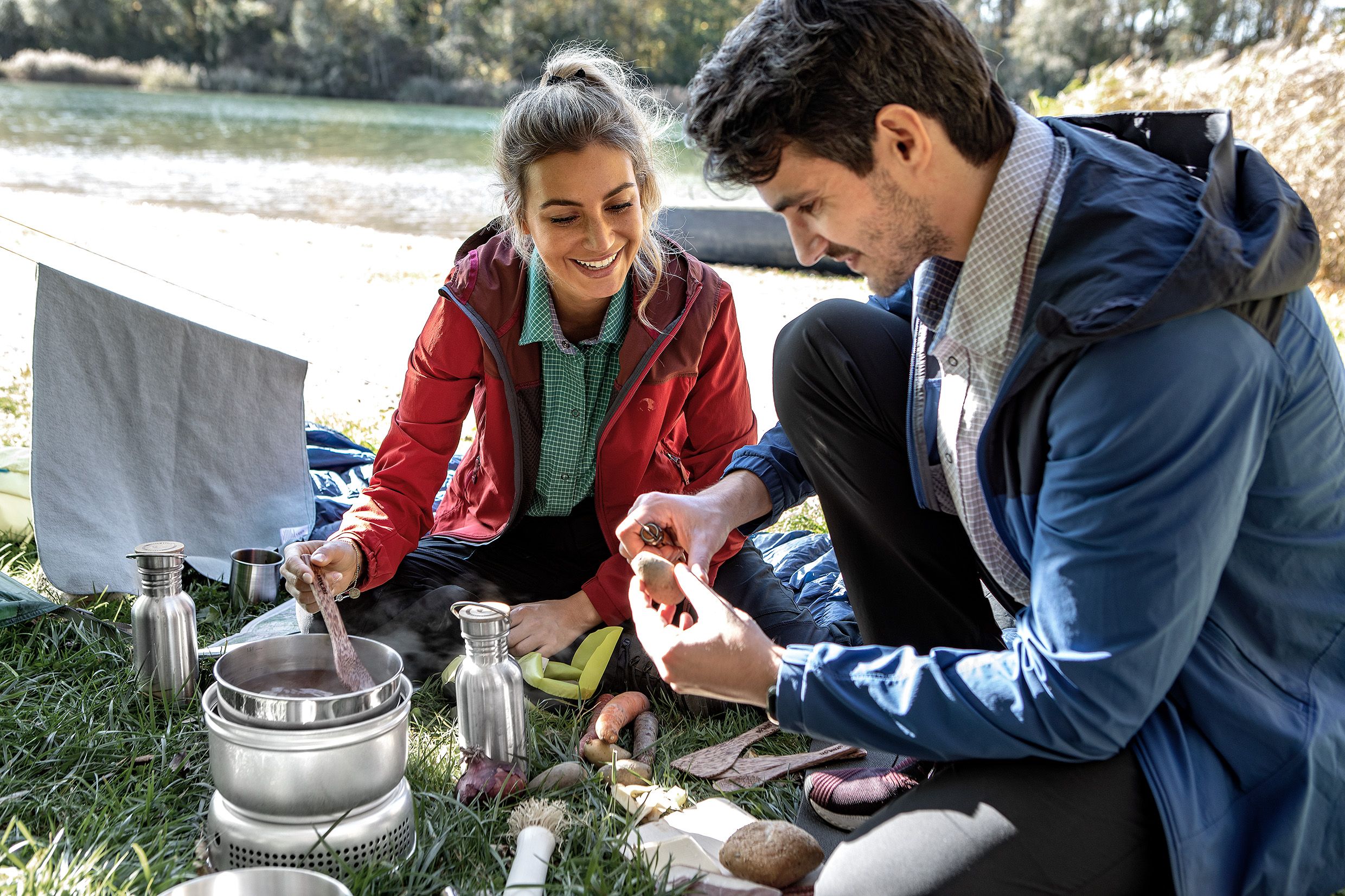Camping stoves are a must for anyone who doesn’t want to miss out on hot food and coffee while camping. Admittedly: There is hardly anything better than enjoying something warm in your belly after an exhausting outdoor day in the middle of nature. And the heat for cooking has to come from somewhere. But which stove suits you best? Gas stove, gasoline stove or spirit stove?
Camping stoves for trekking and longer trips with a tent must meet five criteria: They should be light, handy, easy to use, reliable and safe. These are not the least of the requirements for a supposedly everyday item. As is so often the case, it is worthwhile to do a little research before buying and to seek advice from a specialist retailer as to which models are available. As a little orientation, we have summarized the advantages and disadvantages of the various camping stoves here, so that you can decide more easily which stove suits you best.
Gas stove: efficient and simple
Gas stoves are widespread and many beginners first rely on this variant. The handling is very simple. The stove is attached directly to the cartridge. Most gas stoves are built in such a way that the stove also stands directly on the cartridge.
Basically, there are two types of gas stoves: stoves with piercing cartridges and those with screw cartridges. As the name suggests, the first type is plugged onto the cartridge. The stove and cartridge must then remain connected until the cartridge is empty, otherwise the gas will leak out uncontrollably. The other variant has a thread with a valve. After use, the cartridge and stove can be disconnected again. For transport, this is definitely the more practical variant.

The Burner Set by Tatonka consists of the compact burner, a flame adjuster that can be integrated into the stove and a four-part stand.
The camping stove has a small pack size and is therefore ideal for a variety of outdoor activities.
Gas stoves with piezo ignition are helpful: at the push of a button, a spark is created that ignites the gas. Lighter or matches are thus unnecessary.
Some gas stoves also have a heat exchanger. They require special pots that are somewhat heavier and more expensive, but you need less fuel.
Advantages of the gas stove:
- Easy handling
- High efficiency
- Inexpensive to purchase
- No maintenance necessary
Disadvantages of gas stoves:
- Suitable cartridges are hard to find in some countries.
- A lot of waste due to empty cartridges
- Cartridges can not be refilled.
- Cartridges may not be carried on the plane (The stove without cartridge is not problematic)
- Cannot be used in cold weather (except with special cartridges) and at extreme altitudes
- High weight of cartridges
- Stoves with plug-in cartridge are bulky.
- Hard to tell from the outside how much gas is left in the cartridge.
- Required amount of fuel is difficult to estimate
Also interesting: Backpacking hygiene – How to deal with personal hygiene while trekking

Spirit stoves: easy to handle
Spirit stoves are especially popular in Scandinavia, but are also becoming more and more popular here in Germany, as they offer many advantages.
Depending on the tour, you can fill the amount of fuel individually and save unnecessary weight. In addition, spirit is very easy to get in Central and Northern Europe (in the drugstore or even in the supermarket). Also in other countries it should be easier to find spirit than a suitable gas cartridge.
The stove itself works very simply: spirit is filled into a small container, which has an adjustable lid to regulate the flame. The container in turn stands in a larger container that serves as a support for a pot, pan or coffee pot. To cook, simply light the alcohol in the container and you’re ready to go.
In addition, you can use a windbreak so that your flame is not blown and your food is ready faster.
Advantages of the spirit stove:
- Lightweight, handy and easy to store
- Inexpensive to purchase
- Can be used even during storms and rain.
- Fuel is cheap and available almost everywhere
- Fuel can be filled flexibly
Disadvantages of the spirit stove:
- Moderate efficiency
- Soot stains pots black
- Spiritus must not be transported in airplanes (stove must be cleaned of spiritus residues before air travel)
Gasoline stove: The camping stove for professionals
Gasoline stoves are usually multifuel stoves, i.e. designed for different fuels. You can use them with normal gasoline (absolutely unleaded, everything else is seriously harmful to health!), pure gasoline, kerosene or kerosene. The lower the octane number, the better, because then there are fewer additives, which can be harmful to health and cause soot.
The performance of gasoline stoves is much better than gas stoves or spirit stoves. That means your food will be hot faster! However, using it is also more complicated and not without danger.
The stove itself consists of a bottle for the gasoline, a fuel pump with a check valve that sits on top of the bottle, and a fuel element on which you can place a pot, pan, or coffee pot.
Gasoline burns only in a gaseous state. That means it has to be heated first, and that’s the part that makes gasoline stoves more complicated to use: you have to preheat the stove. First, you create pressure in the gasoline bottle with the hand pump. Then you carefully turn on the valve, leaving it open for just a few seconds until some gasoline comes out. Then close the valve again. Then use the lighter to light a flame on the fuel element. Now wait about a minute until the fuel element is warm and then open the valve further. Immediately you will notice that the stove becomes louder. The flame turns predominantly blue and cooking can begin.
Especially when preheating, things can go wrong. If you turn the valve all the way up too early, you’ll create a pilot flame that shouldn’t be underestimated. In addition, the high pressure in the system can easily cause gasoline to escape uncontrollably, especially if the seals become brittle. Escaping drops can ignite and there is a risk of fire! Regular maintenance and cleaning are therefore particularly important!
You should also be careful when storing and transporting gasoline in your backpack. Because gasoline not only stinks very strongly for a long time, as a solvent it also attacks plastics.
Advantages of the gasoline stove:
- Very good efficiency
- Can be used in any weather and at any altitude
- Gasoline is available everywhere in the world
- Lightweight and compact (except for the fuel bottle)
Disadvantages of the gasoline stove:
- High cost to purchase
- More dangerous to use than gas or alcohol stoves
- Must be cleaned and maintained regularly
- Before air travel, stove and fuel bottle must be thoroughly cleaned of fuel residue
- Leaking gasoline in the backpack can cause great damage
- Fuel smells unpleasant
- Produces a lot of soot
- Very noisy
Reading tip: Camping kitchen – How to cook delicious food while camping

Conclusion: The spirit stove is a good all-rounder
As is so often the case, it’s a question of which camping stove is best for you:
For those for whom uncomplicated handling is more important than performance, the spirit stove is the best choice. It is also the most environmentally friendly of the three types of stove, since alcohol is used as fuel and no cartridge waste is produced.
If, in addition to uncomplicated handling, performance is also important to you, then it’s best to go for a gas stove.
Extreme outdoor adventurers who depend on a powerful stove are best off relying on a gasoline stove. Even in the remotest corner of the earth, the supply of fuel is guaranteed.
With the right stove, nothing stands in the way of your outdoor cooking skills. Have fun on your next adventure!







